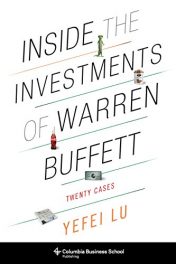 Authors: Vijay Govindarajan and Chris Timble
Authors: Vijay Govindarajan and Chris Timble
Publisher: Harvard Business Review Press
Book Review by: Sonu Chandiram
This 229-page book on ‘reverse innovation’ in business a new term you will learn about and what it means, is itself an innovative work by its two authors because it recognizes, as few books do, that the United States is no longer a pioneer – as it once was – in creating new products and services that makes life easier for billions of people worldwide.
Other countries such as China and India have taken the lead in innovation. Chinese firms now design numerous money- and time-saving products, mass-manufacture them and export them in large quantities worldwide. India’s firms do likewise.
In India’s auto industry alone, Tata Motors came up first with the Nano which made personal transportation affordable for millions. Then they grabbed the opportunity to mass-produce the air-powered car developed by French innovator Guy Negre. And now, the company is working to commercialize the production of a water-powered car with chemistry professor and energy innovator Daniel Nocera at the Massachusetts Institute of technology.
With a Foreword by India-born PepsiCo Chairperson and CEO Indra K. Nooyi, Reverse Innovation is organized in two basic parts. Part I discusses the challenges inherent in reverse innovation, particularly the five paths to it, and Part II presents a dozen real examples of it by companies ranging from day-to-day consumer product makers such as Proctor and Gamble and PepsiCo to high-tech firms such as EMC and Logitech.
The authors discuss each of the five basic paths of reverse innovation in terms of gaps to bridge, namely the infrastructure gap, the performance gap, the preferences gap, the regulatory gap and the sustainability gap.
With regards to penetrating massive markets like China and India, each with billion-plus consumers, which have demands for a large variety of goods, it is not as simple for U.S. firms to create products that they think will sell in those countries. Correct pricing is a huge challenge to overcome, among other unknowns.
They elaborate on this challenge: “we warned (in chapter 10) that one person with ten dollars to spend has a vastly different set of wants and needs than ten people each with one dollar to spend. This is a good beginning, but reaping the full benefit of reverse innovation requires a much deeper understanding of the differences between rich-country and poor-country needs.”
They way a certain country gets on a path of progress is never the same as another country does. How the U.S. developed centuries or decades ago would not be similar how India has or will innovate and grow. Many of the U.S. inventions and innovations are already present in India. It is not as simple as exporting U.S. products to India for it to come to the modern age. Income, pricing, wants and needs gap are huge between these two countries, although they share the same values of freedom and democracy.
Citing 2010 annual per-capita income comparisons of $47,000 in the United States and just $3,000 in India, they point out: “Even under the most optimistic economic growth assumptions, it will take a long and slow march of at least two generations for India to catch up to the U.S. on this metric.”
Who really can correctly guess how long it will take Indians to reach per-capita income of $47,000 and by then, what will be the real purchasing value of the U.S. dollar, and importantly what will be the U.S. dollar – Indian rupee exchange rate?
And with innovative products created in other countries being mass-produced and sold in India, the competitive advantage of India over the United States is increasing. India has also reached a point where its own local innovation is creating products that are being exported to the United States with a huge pricing advantage. Who knows how many U.S. companies may go out of business because of this advantage.
Issues and questions such as these and similar ones make this book a compelling read by Govindarajan and Trimble, whether you are a business owner or executive or just an ordinary citizen concerned about globalization and global competition.
Vijay Govindarajan is a professor of International Business at the Tuck School of Business at Dartmouth College and the first Professor in Residence and Chief Innovation Consultant at General Electric. He ranked third in the Thinkers 50 list of the greatest management thinkers in the world.
Chris Timble, also on the faculty at Tuck School of Business, is a well-known speaker and consultant on innovation. Learn more on www.innovationreverse.com






